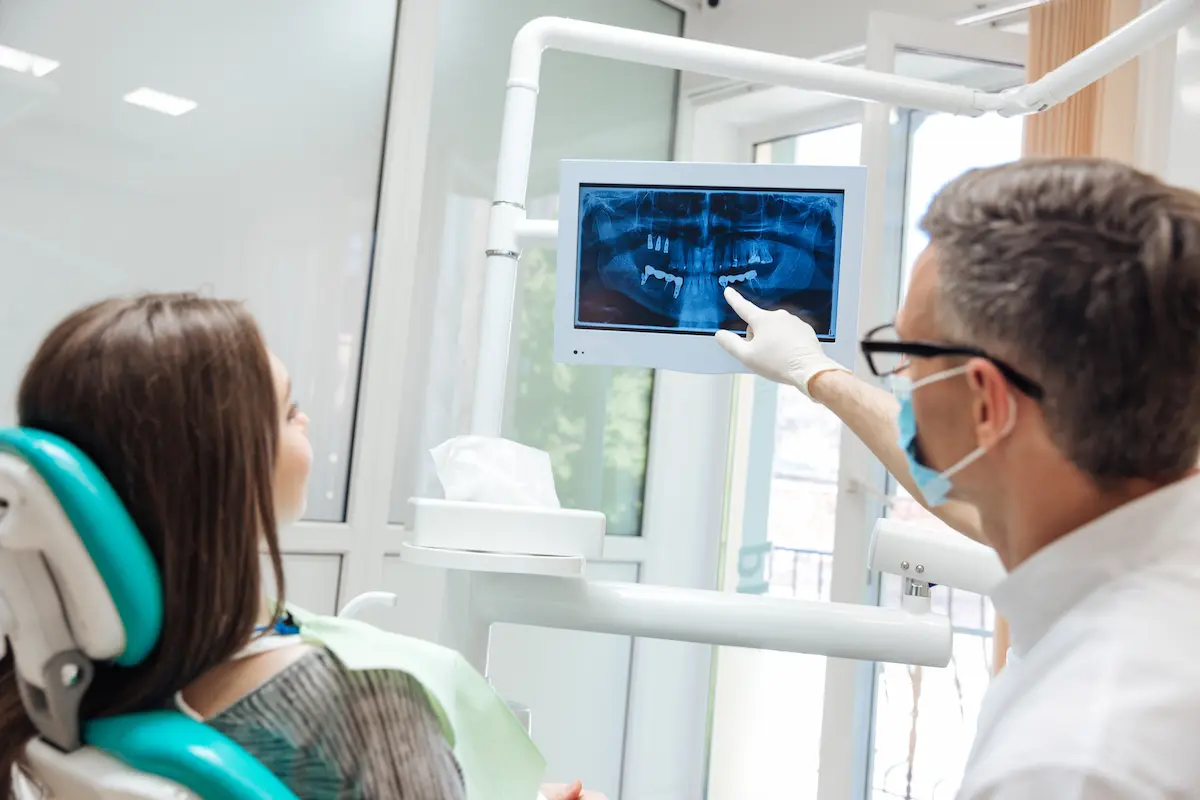
Dental professionals today are using digital dental radiographs to better detect, diagnose, treat, and monitor oral conditions and diseases of patients. Radiography is a routine part of the dental check-up. Odontozenic Dental Clinic uses digital X-rays, a state-of-the-art technology, to help diagnose your dental health with accuracy, speed, and comfort.
Digital X-ray offers a way to capture dental images through a sensor that processes the image onto a computer screen. Digital X-rays are faster and contain less radiation than traditional X-rays. When a digital X-ray is done, the image then appears on the computer in a matter of seconds. Our specialist can then zoom digital X-ray into the image to better assess and educate the patient regarding their oral health.
The use of digital radiography helps in-depth understanding of a patient’s dental anomalies and presents the most viable solution. With the latest radiographs taken from our Kodak, Sirona and New Tom systems are useful in identifying persisting oral problems, ODONTOZENIC seamlessly caters to complete adult and child dental x-rays.
You can get access to RVG (Radio-Visio-Graphy), OPG (Orthopantomogram), Lat Ceph (Lateral Cephalometric Radiograph) as well as CBCT (Cone Beam Computed Tomography) amongst others, all under one roof.
Benefits of Our Digital Radiography
Benefits of digital dental radiographs compared to traditional dental X-rays include the following:
- Digital radiographs reveal small hidden areas of decay between teeth or below existing restorations (fillings), bone infections, gum (periodontal) disease, abscesses or cysts, developmental abnormalities, and tumors that cannot be detected with only a visual dental examination.
- Digital radiographs can be viewed instantly on any computer screen, manipulated to enhance contrast and detail, and transmitted electronically to specialists without quality loss.
- Early detection and treatment of dental problems can save time, money, and discomfort by avoiding more invasive treatments.
- Digital radiographs can be transferred easily to anyone with compatible computer technology. It can be transferred in PDF format without carrying films.
- Digital X-rays can be better stored and there is less chance of losing or misplacing them. The images can be stored on a protected hard drive to limit accessibility.
- Digital sensors and PSP (photostimulable phosphor) plates are more sensitive to X-radiation and require 90% less radiation than film. This technology adheres to the ALARA (As Low As Reasonably Achievable) principle, which promotes radiation safety.
- Digital X-rays offer a way to eliminate the pollution. Since film processing chemicals are not required, Digital images can be captured without leftover chemicals that are hazardous waste.
- Digital radiograph features including contrast, colorizing, 3-D, sharpness, flip, zoom, etc., assist in detection and interpretation, which in turn assist in diagnosis and patient education. Digital images of problem areas can be transferred and enhanced on a computer screen next to the patient’s chair.










